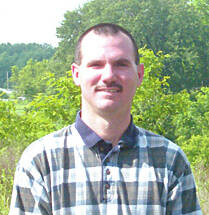
The long awaited archery deer season begins Sept. 30 and runs until Feb. 4 across the state of Ohio. It has easily become one of Ohio’s most popular hunting seasons.
No more than one antlerless deer may be taken from all public hunting areas per license year. A list of public hunting areas is available at wildohio.gov. Authorized Division of Wildlife controlled hunts; Andreoff, Big Island, Wyandot, Lake La Su An, and Killdeer Plains wildlife areas are exempt. Hunters may not hunt deer over bait on any public hunting area.
In addition to a valid Ohio hunting license, hunters are required to purchase an eithersex deer permit or a deer management permit to hunt deer in Ohio, unless exempt. The either-sex deer permit is valid state – wide from Sept. 30, 2023 to Feb. 4, 2024. In the disease surveillance area, the ei – ther-sex deer permit is valid from Sept. 9, 2023 to Feb. 4, 2024. The deer management permit is valid from Sept. 30 to Nov. 26, 2023. In the disease surveillance area, the deer management permit is valid from Sept. 9 to Nov. 26, 2023.
The either-sex deer permit may be used to hunt an antlered or antlerless deer. This permit may be used during any of the deer hunting seasons and controlled hunts. This permit may be purchased individually throughout the entire deer season. Only one antlered deer may be taken during the 2023-24 season. An antlered deer has at least one antler 3 inches or longer in length.
Make sure your archery equipment follows the requirements. Both compound and recurve bows must have a minimum draw weight of 40 pounds. Crossbows must have a minimum draw weight of 75 pounds. The arrow tip needs to have a minimum of two cutting edges, which may be exposed or unexposed and a minimum of ¾ inch width. Expendable and mechanical broadheads are allowed.
• Hunters in Hardin, Marion, and Wyandot counties have additional opportunities to harvest white-tailed deer as the Ohio Department of Natural Resources Division of Wildlife continues to monitor for Chronic Wasting Disease in the region.
Since the fall of 2020, 23 wild deer in Ohio have tested positive for CWD, all in Marion and Wyandot counties. A disease surveillance area was established in Hardin, Marion, and Wyandot counties in 2021 and remains in effect. CWD is a fatal neurological disease that affects deer and other similar species, including mule deer, elk, and moose. No evidence exists that CWD can spread to humans, pets, or livestock.
The Division of Wildlife established earlier hunting seasons within the disease surveillance area to slow the spread of CWD by reducing deer numbers before the breeding season. Archery hunting season began Saturday, Sept. 9, and an early gun hunting season is open Saturday, Oct. 7 to Monday, Oct. 9.
CWD sampling is required for all deer harvested within the disease surveillance area Oct. 7-9, Nov. 4-5, Nov. 11-12, as well as during the entire seven-day gun season (Nov. 27-Dec. 3). Staffed sampling locations will be available during the seven-day gun season at the addresses below.
Outside the seven-day gun season, hunters should use self-serve kiosks for mandatory sampling or for free voluntary sampling throughout the deer season (Sept. 9, 2023-Feb. 4, 2024). Kiosk locations are available at ohiodnr.gov/cwd. Instructions for sample submission will be provided at the kiosk. Successful hunters are not required to surrender their deer. Those with questions on having their deer sampled can call (419) 429-8322.
In addition to mandatory testing, the following regulations apply within the disease surveillance area: The placement of or use of bait (salt, minerals, or any food) to attract or feed deer, as well as the hunting of deer by the aid of bait, is prohibited. Normal agricultural activities, including feeding of domestic animals, as well as hunting deer over food plots, naturally occurring or cultivated plants, and agriculture crops, are not prohibited.
The removal of a complete carcass or high-risk parts from the disease surveillance area is prohibited unless the carcass complies with deer carcass regulations, or the carcass is delivered to a certified taxidermist or processor within 24 hours of leaving the area. Additional information on carcass regulations and a complete list of certified processors and taxidermists can be found at ohiodnr.gov/cwd.
The proper handling of carcasses, trims, and parts dramatically decreases the risk of spreading disease. Hunters should properly dispose of deer carcasses by double-bagging all high-risk parts (brain, spinal cord, eyes, and lymphoid tissue) and setting them out with their household garbage for trash pickup, when permitted by waste disposal facilities. Those without trash pickup can double-bag the carcass and take it to a municipal solid waste landfill or bury the carcass at least three feet deep on the property of harvest. The Division of Wildlife provides receptacles in the disease surveillance area for proper carcass disposal.
The Division of Wildlife has conducted routine surveillance for CWD since 2002, with more than 39,000 deer tested. CWD has been detected in 31 states and four Canadian provinces.
Until next time, Good Hunting and Good Fishing!
Ken Parrott is an Agricultural Science teacher with Northmor High School.

